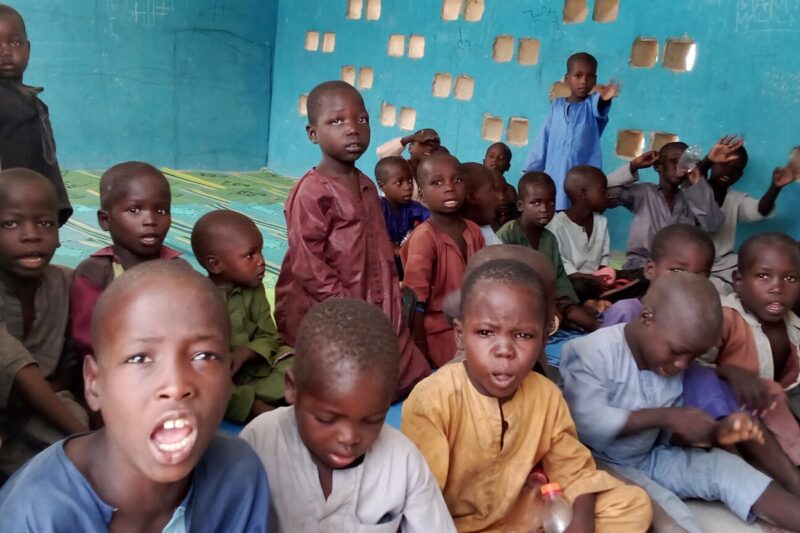It is not unusual to find 80 to 150 pupils in a class with a single teacher – and often there are not even enough chairs for all the schoolchildren
Not enough classrooms, too many pupils and too few teachers are just some of the problems schools in Maiduguri and in local government areas throughout Borno State face.
This is despite the announcement made by governor Babagana Umara Zulum in September last year that he had approved the recruitment of 4,000 teachers who had been evaluated and shortlisted for deployment to public primary and secondary schools across the state.
When Zulum approved the recruitment, 3,000 had already been assigned to government primary schools; 1,000 were to be given posts at public secondary schools.
He said the 4,000 teachers were “meticulously selected” after they proved competent to teach in primary and secondary schools.
But school heads said there were still far too few teachers to cope with the large number of pupils and this was having a negative effect on children’s education.
It was not unusual to find anything from 80 to 150 pupils in one class. In many cases, there were not even enough chairs to accommodate the number of pupils, they said.
Overcrowded classrooms were detrimental for both teachers and pupils. Teachers were exhausted and often left the education system because of burnout. And, they said, pupils could not concentrate properly and many were falling behind in their schoolwork.
Aisha Mohammed Ali, the principal of Mafoni Primary School in Maiduguri, told RNI that in some of the classes there were as many as 150 pupils being taught by a single teacher.
“There are far too few teachers in this school. Initially, 17 teachers were deployed to the school by the Borno State Universal Basic Education Board. But, as I speak to you right now, most of them have left, some are on sick leave, some have retired and some were redeployed to other schools.
“Primary 1, for example, has A, B, and C pupils combined into one class.
“When you go into a class of about 100, and often more, there is usually just one teacher trying to cover about 14 subjects. It’s extremely difficult for the teacher and it’s exhausting. It is impossible to give all the pupils the attention they need. One teacher simply cannot deal with so many pupils. The teacher gets burnout and either goes on sick leave or resigns. This is having a negative effect on the education of our children.
“Having so many pupils in a class is not fair to them and also not fair to the teachers.”
The principal of Kushari Primary School, Fanna Bukar, said: “One of the problems we have is that there are not enough classrooms. We recently admitted more than 100 pupils. In total we have almost 2,000 pupils in this school.
“We have only 14 classrooms which are not enough. One classroom accommodates almost 150 pupils. It’s far too congested.
“And in the class of 150 pupils there is only one tutor to teach all the subjects. It drains the teacher’s energy and enthusiasm. The staff complement is only 18. We desperately need more teachers and more classrooms.
“We have employed volunteer teachers within the school’s community to help the full-time teachers. But the volunteers are not qualified or trainable. They are in the class to help us keep the pupils in order and to do menial tasks.
“We give them a small amount of money which we take from the parent and teachers’ association. The pay is really just to help them with transport costs. It is not much more than a gesture that we hope will motivate them and dissuade them from leaving the school.”
Imam Mohammed Ibn Mohammed, a lecturer at the Nigeria Arabic Language Village Ngala in Maiduguri, told RNI that it was impossible for one person to control a class of 150 pupils.
“The teacher will get confused and the pupils who are being taught cannot always hear what the teacher is saying and can fall behind in their studies. They are easily distracted and cannot concentrate properly.
“In summer, because of the excessive heat, it is particularly hard. Because so many pupils are squashed into one classroom, they are hot and need air. They cannot concentrate. There have been instances when pupils have fainted. It’s really not good for either the kids or the teachers.
“There should be no more than 45 or 50 pupils at most in one class. Even that number is too high.”
AYSHA MUSTAPHA KOLOMI






